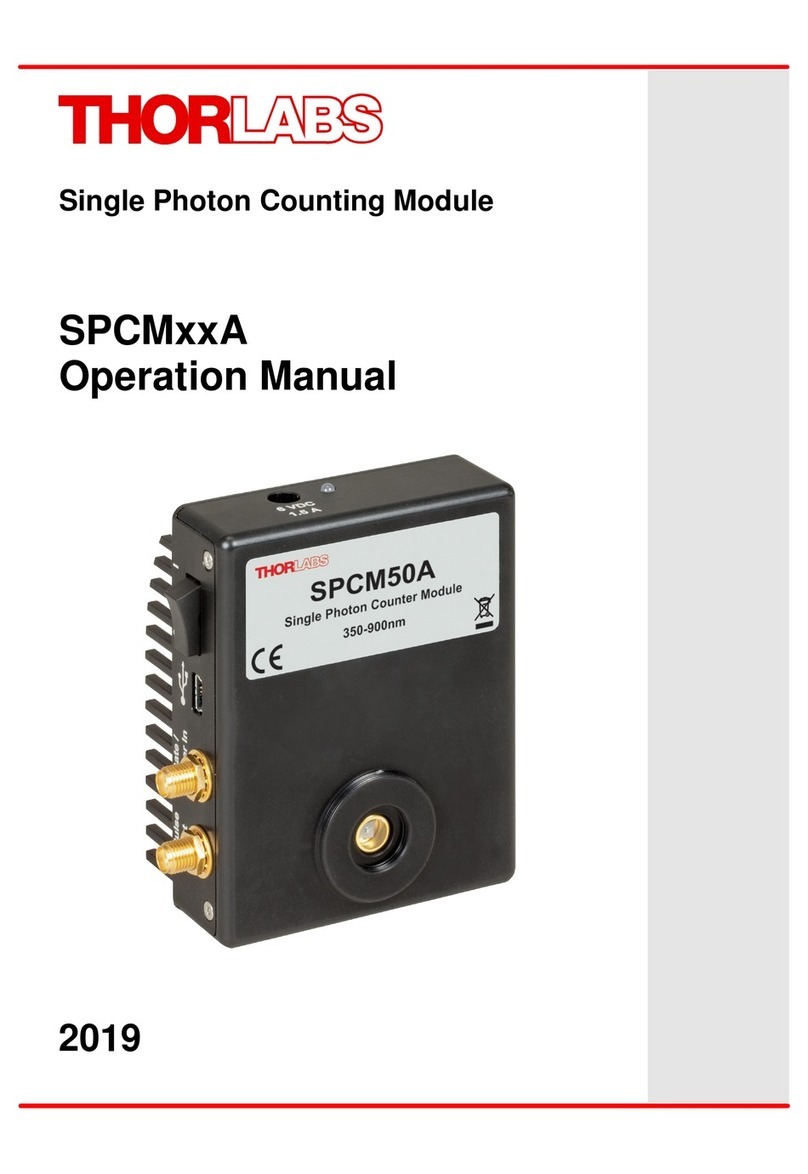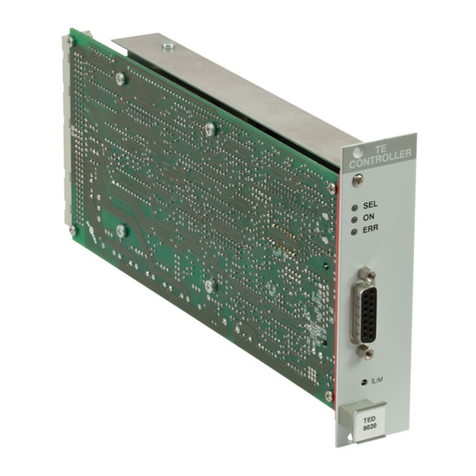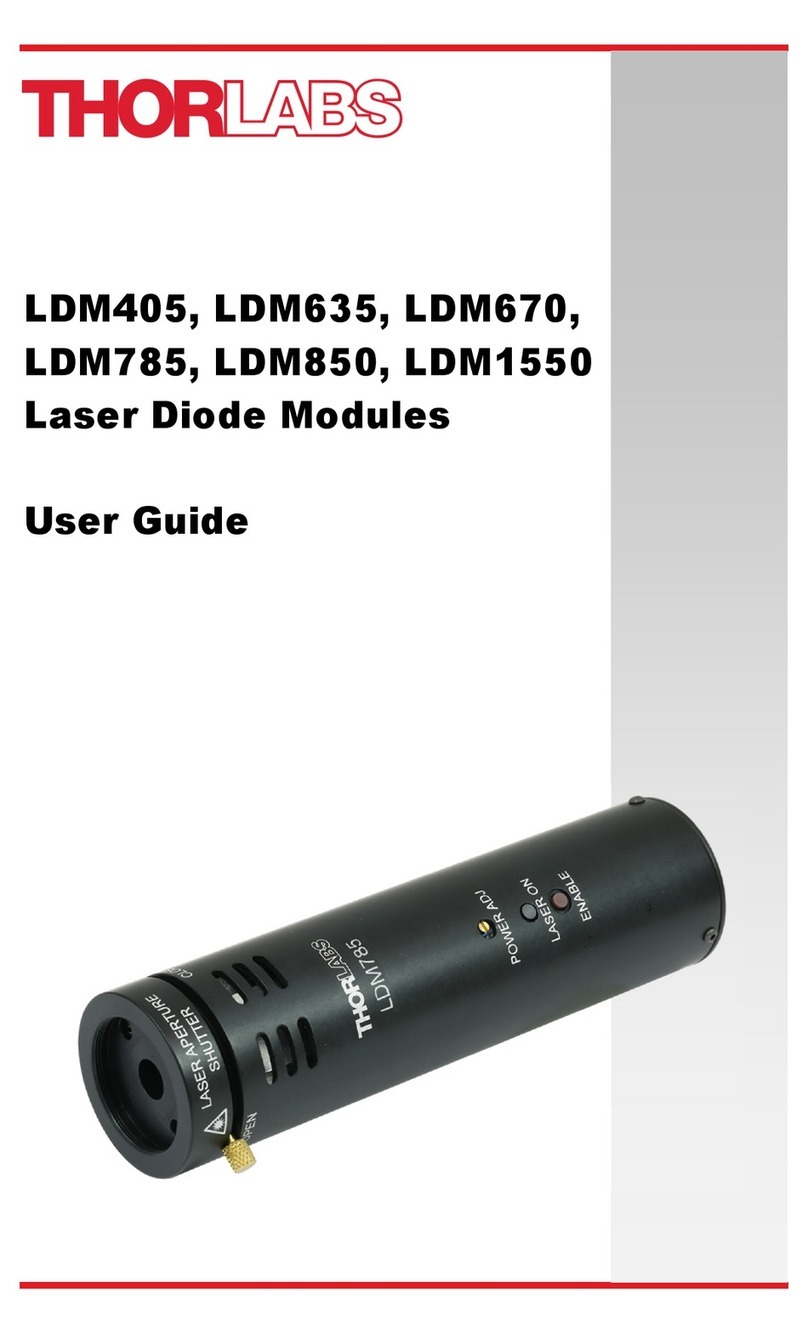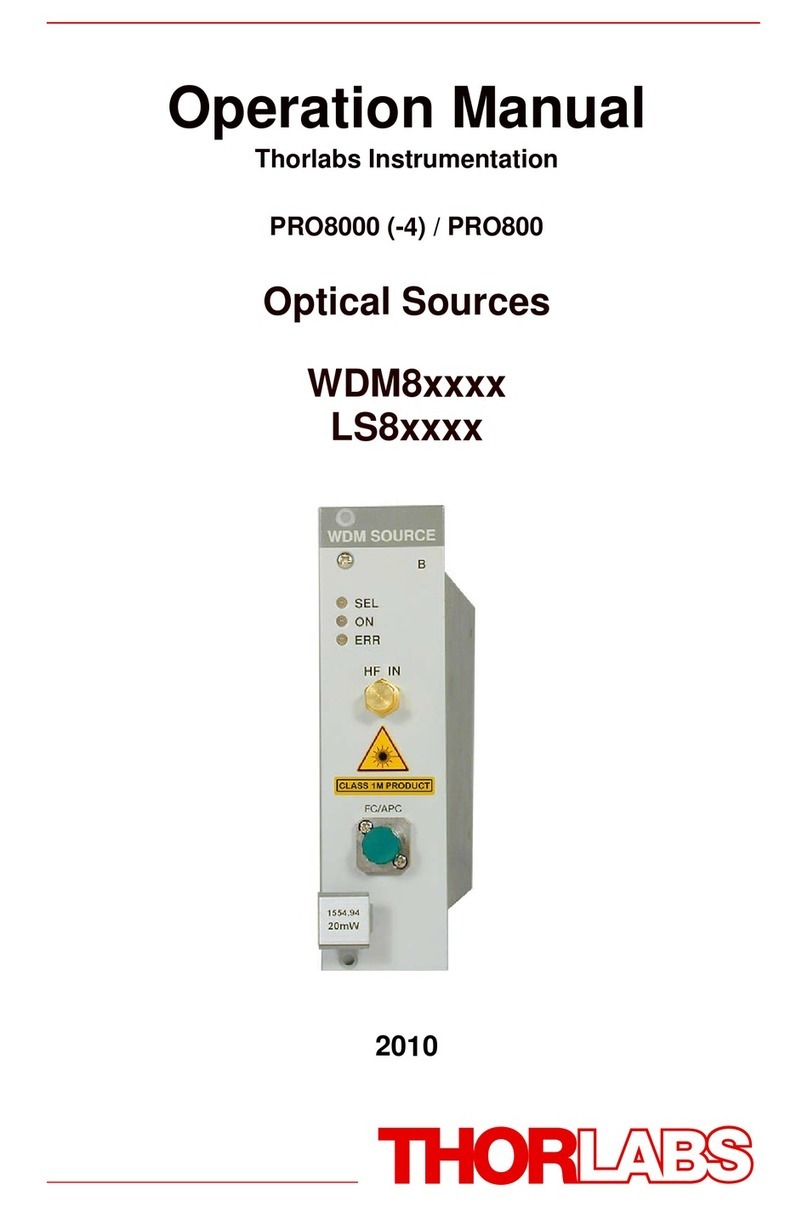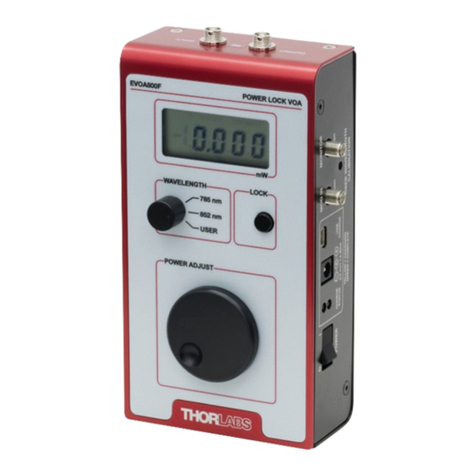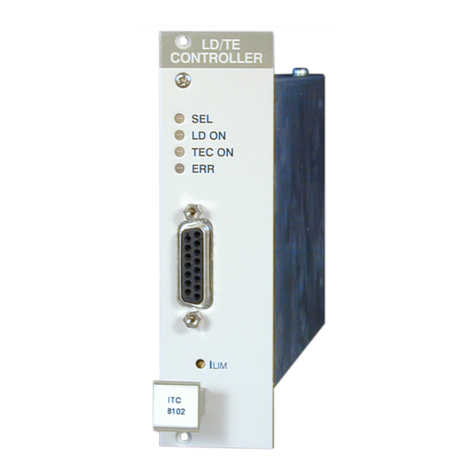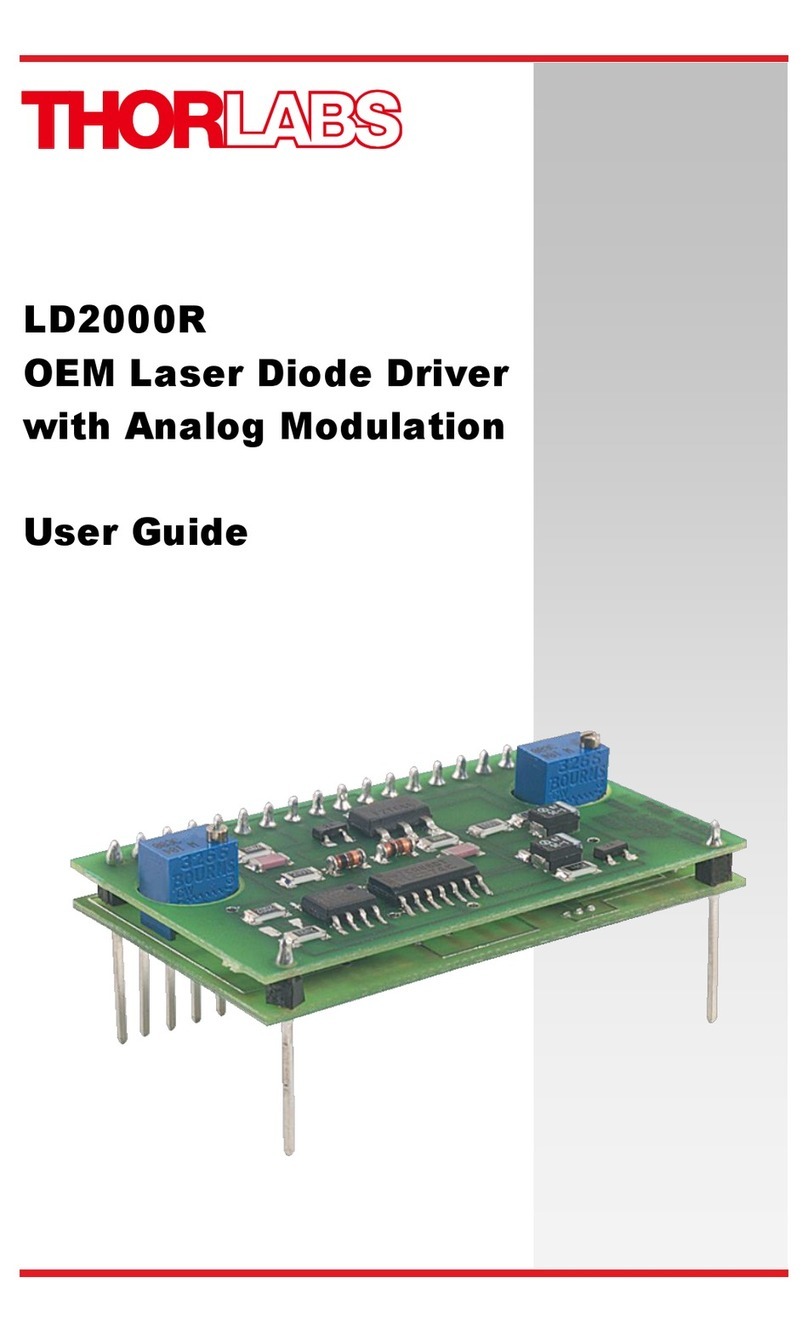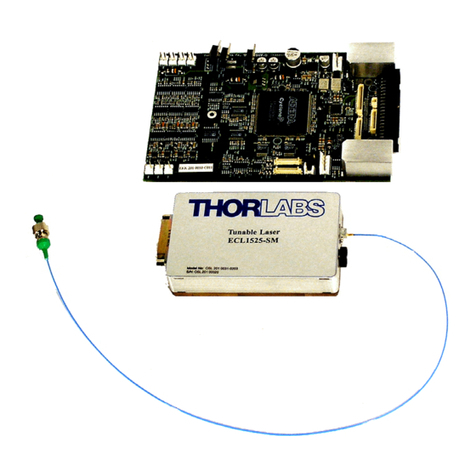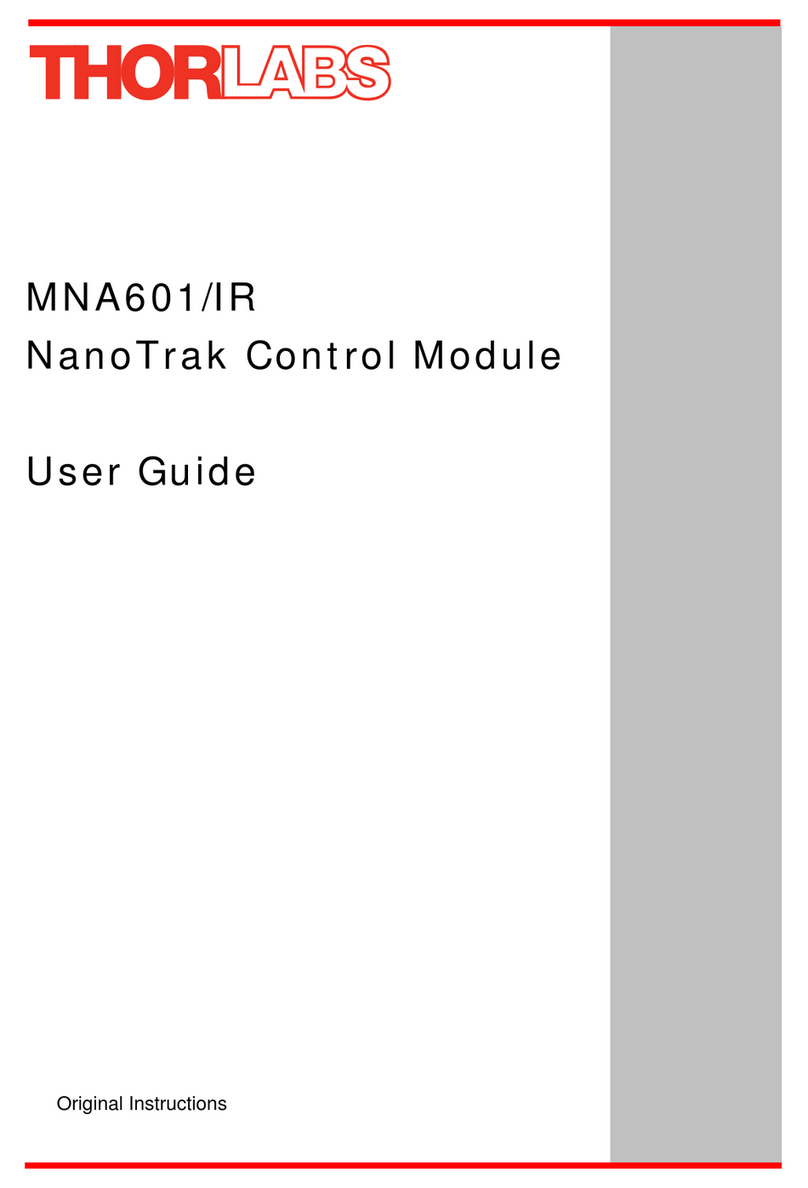
_______________________________________________
______________________________________________________________________________________________________
© 2012 Thorlabs
Contents Page
1General description of the PDA8000 2
1.1 Safety 2
1.2 Features 4
1.3 Technical data 5
1.4 Operating elements at the front of the module 6
1.5 Presettings 7
1.5.1 Offset adjustment 7
1.6 Connecting the photodiode 7
2Operating the PDA8000 8
2.1 Functions in the main menu 8
2.1.1 Display 8
2.1.2 Selecting a module 8
2.2 Functions in the channel menu 9
2.2.1 Display 9
2.2.2 Changing parameters 10
2.2.3 Selecting the polarity of the photo diode 11
2.2.4 Calibrating the photo diode 11
2.2.5 Setting the bias voltage 11
2.2.6 Switching on the bias voltage of the photo diode 12
2.2.7 Setting the measurement range 12
2.2.8 Measuring the forward voltage (option PDA8000-FWD) 13
2.3 Display error messages 13
3Communication with a control computer 14
3.1 General information 14
3.1.1 Nomenclature 14
3.1.2 Data format 14
3.2 Commands 15
3.2.1 Selecting the module slot 15
3.2.2 Selecting a port (PORT) 15
3.2.3 Calibrating a photo diode (CALPD) 15
3.2.4 Programming the forward current (IFWD) 16
3.2.5 Reading the photo diode current (IPD) 16
3.2.6 Switch the bias voltage on and off (PDBIA) 17
3.2.7 Select the photo diode polarity (PDPOL) 17
3.2.8 Reading the optical power (POPT) 18
3.2.9 Selecting the measurement range (RANGE) 18
3.2.10 Querying the module type 19

